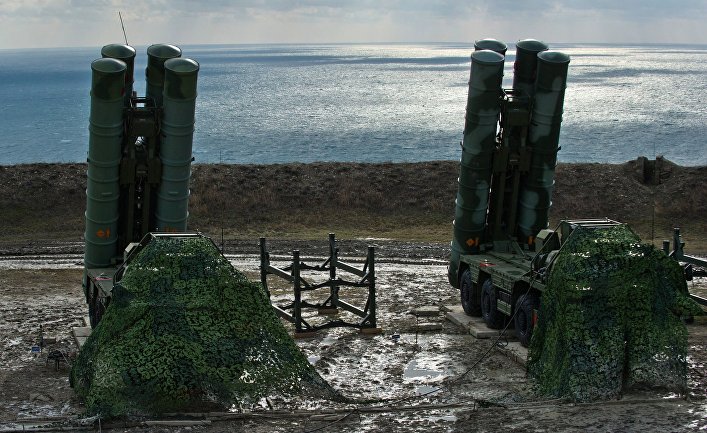
Once at the end of November 2015, the Turkish F-16 fighter shot down a Russian su-24, were placed in Syria of modern air defense systems s-400, equipped with missiles, surface-to-air. Russian and Western media sources were not slow to draw attention to the fact that this system is able to intercept and destroy targets at a distance of up to 400 kilometers (250 miles) thanks to new rockets of distant radius of action, known under the designation 40N6. The same allegations were made after placing the s-400 in Kaliningrad and Crimea. However, after more than a year after the placing these systems in Syria, there is little evidence that the s-400, in fact, already equipped with 40N6 missiles.
A large part of the confusion associated with the equipment systems s-400 missiles 40N6, is associated with the existence of another contemporary Russian system s-300V4, which began to be supplied to Russian troops in late 2014. In March 2015, the Russian defense Ministry announced that a new unnamed missile with a range of 400 kilometers, designed for s-300V4, began to arrive in the Russian troops, and on the basis of this message, some Russian media came to the conclusion that we are talking about missiles 40N6.
However, such assumptions proved to be wrong — next month, a source in the Russian defense Ministry told news Agency TASS that the state tests of new missiles of distant radius of action for s-400 was supposed to be finished in may-June of the same year. According to the source, “the range of the new missiles is the same as that recently adopted by missiles for anti-aircraft missile system s-300V4”, but it has higher performance.
Although this source from the Ministry of defence did not elaborate on what the new missile for s-400 was going on, his words clearly indicate the 40N6 missile. In fact, hints that the s-300V4 and s-400 will use a variety of missiles with the same range, appeared after the publication in a February 2015 article in the authoritative and published in Russian language journal “aerospace defense”, in which the authors talked about the new rocket of distant radius of action for s-300V4, known as 9М82МВ. The authors of this article reported that the missile 9М82МВ was successfully tested in 2004 and 2006, and also that it is capable to destroy targets at a distance of 350 kilometers (217 miles).
Final confirmation of the fact that the missile 40N6 is different from that used by s-300V4, appeared in September 2016, when the representative of “Concern “Almaz-Antey” told reporters that the s-300V4 will use the new missile with a range of 400 kilometers, known as 9М82МД. In contrast to the 40N6 missile, which was developed “machine-building design Bureau Fakel, the missile 9М82МД was created “experimental design Bureau “Innovator”, and this means that the question in this case is not about the 40N6 missile.
Additional guidance regarding the lack of 40N6 missiles in the Russian air defense systems is contained in the images s-400, located in Syria, and also in other places. A quick search on the Internet regarding the transportation and launchers of s-400 allows you to obtain images where you can see only the “normal” configuration — that is, with four double transport-launch containers. Given the fact that the missiles 48Н6ДМ/48Н6Е3 of s-400 with a claimed range of 250 kilometers (155 miles) takes up the entire length of the container, it is highly likely that 40N6 missiles more range (and presumably larger) — requires enhanced transport-launch containers. This means that one transport-launch container can be only two such missiles.
In fact, the transport-launch containers s-300V4 with larger 9М82М missiles with a range of 200 kilometers (124 miles) and 9М82МД missiles with a range of 400 kilometers can be accommodated in two containers of increased size at each installation. Therefore, there is reason to believe that the new missile has not yet entered service. Therefore, it may be too early to designate the airspace in a radius of 400 kilometers as a no-fly zone With s-400.







